
I’m not sure which was worse, three flights and 24 hours of traveling there, or four flights and 30 hours of traveling back, but I’ll never say no to a FREE trip to Greece. For those of you close to me, you may have been following along with my travels and wondering, how did she get a free trip to Greece?! Well in short, I travelled across the world to write a single article about pasta. I’m here to tell you dreams DO come true. In a bit longer, I was invited on a press trip by the Greek National Tourism Board to cover Corfu’s 2nd Annual Food & Wine Festival that allowed me to explore the tastes, flavors, and history of Corfu as a blogger, and share it with a wider audience as a food writer, most notably in my FIRST article for SAVEUR all about Corfiot cuisine.
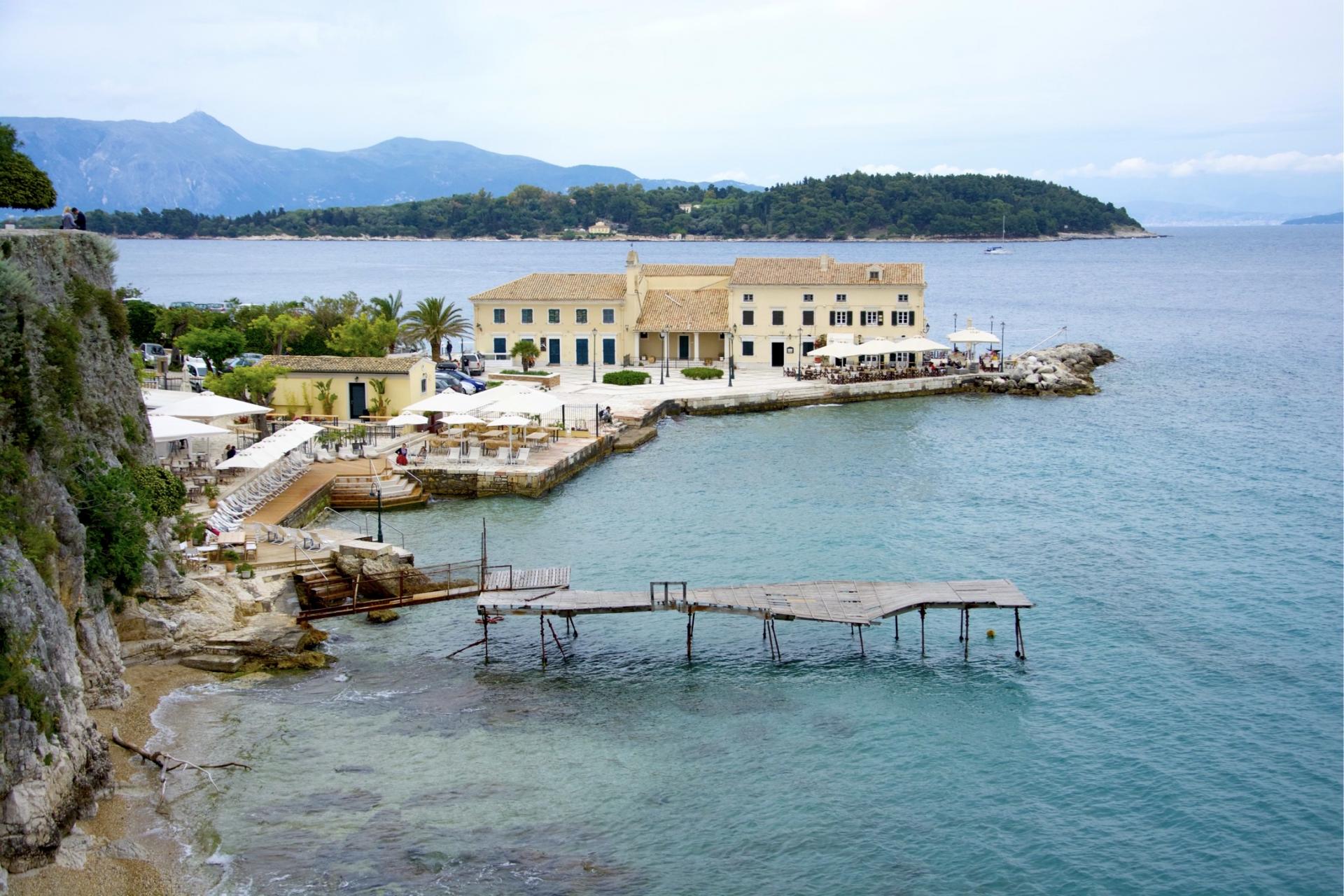
Corfu is Greece’s seventh-largest island and the most northwestern of the Ionian islands. To touch on my article which you should definitely read, Corfu actually has a very large Italian influence as the Venetians ruled for over 400 years. As a historic point of entry from the Adriatic Sea and varying rulers over history, Corfu is an intersection of Mediterranean influences both culturally and gastronomically.
Day 1:
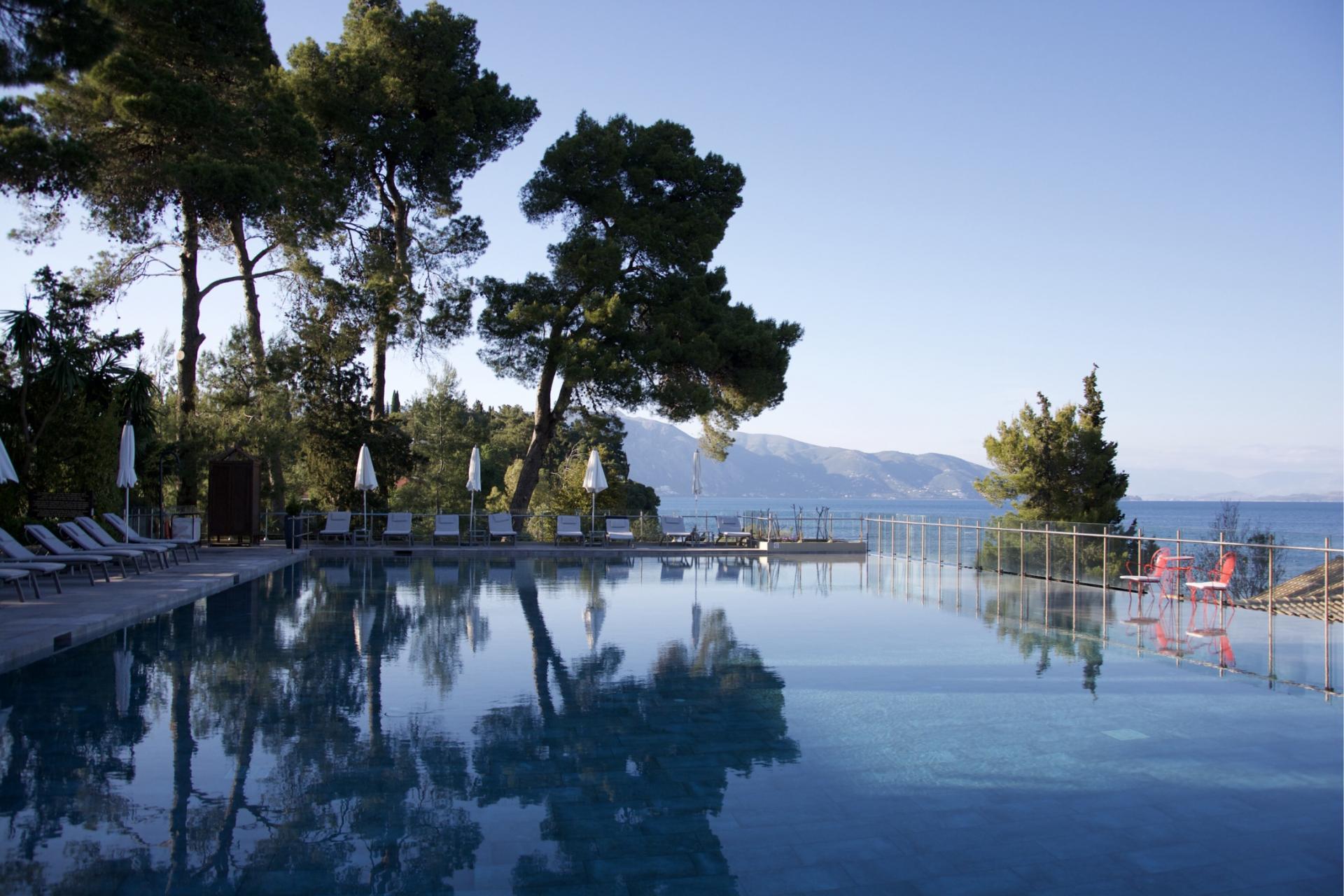
We drove along the glistening sea up to the B-E-A-UTIFUL Kontakali Bay Resort & Spa that was to be my home for the next few days. Though a few minutes outside the city, it’s well worth the drive to stay at this luxury hotel hidden within lush gardens with incredible service set on the most scenic beach.
The festival kicked off at the Esplanade, snuggled between the old fortress and the historic Liston Square that leads into the Old Town. The Liston, a past meeting place for the nobles inspired by the Rue de Rivoli in Paris, is now the heart of social life in Corfu with the main promenade full of restaurants, coffee shops, and boutiques that are enjoyed day and night. The Old Town of Corfu is enclosed between two fortresses, the new and the old, that used to be linked during the Byzantine rule. Later the site of Greece’s first Ionian University, Corfu has become a collection of ancient buildings emphasized by arched colonnades, pastel-colored houses, and small paved alleyways that all add to the joie de vivre of the locals.
Our first of many delicious dinners was at Rex Restaurant which has been opened since 1932. Our guide soon-turned-friend, Takis Anagnostakos, Managing Director of the festival, described Rex as a traditional restaurant, not in the sense that you are limited to the classic dishes like tzatziki and moussaka, but that it uses traditional Corfiot ingredients in new ways that still emphasize the traditional, local products. From the yellow pumpkin salad with graviera cheese and crispy pancetta, to the tender grilled goat with sun-dried tomato stew, they saved the best for last with their deconstructed baklava which was one of the top three desserts, if not best, I have had in my ENTIRE LIFE (this baklava was the first of numerous that week, leading to me nicknaming myself ‘The Baklava B*tch’—sorry mom— my friend Marcia of The Tablehopper and I had a good laugh over).
Day 2: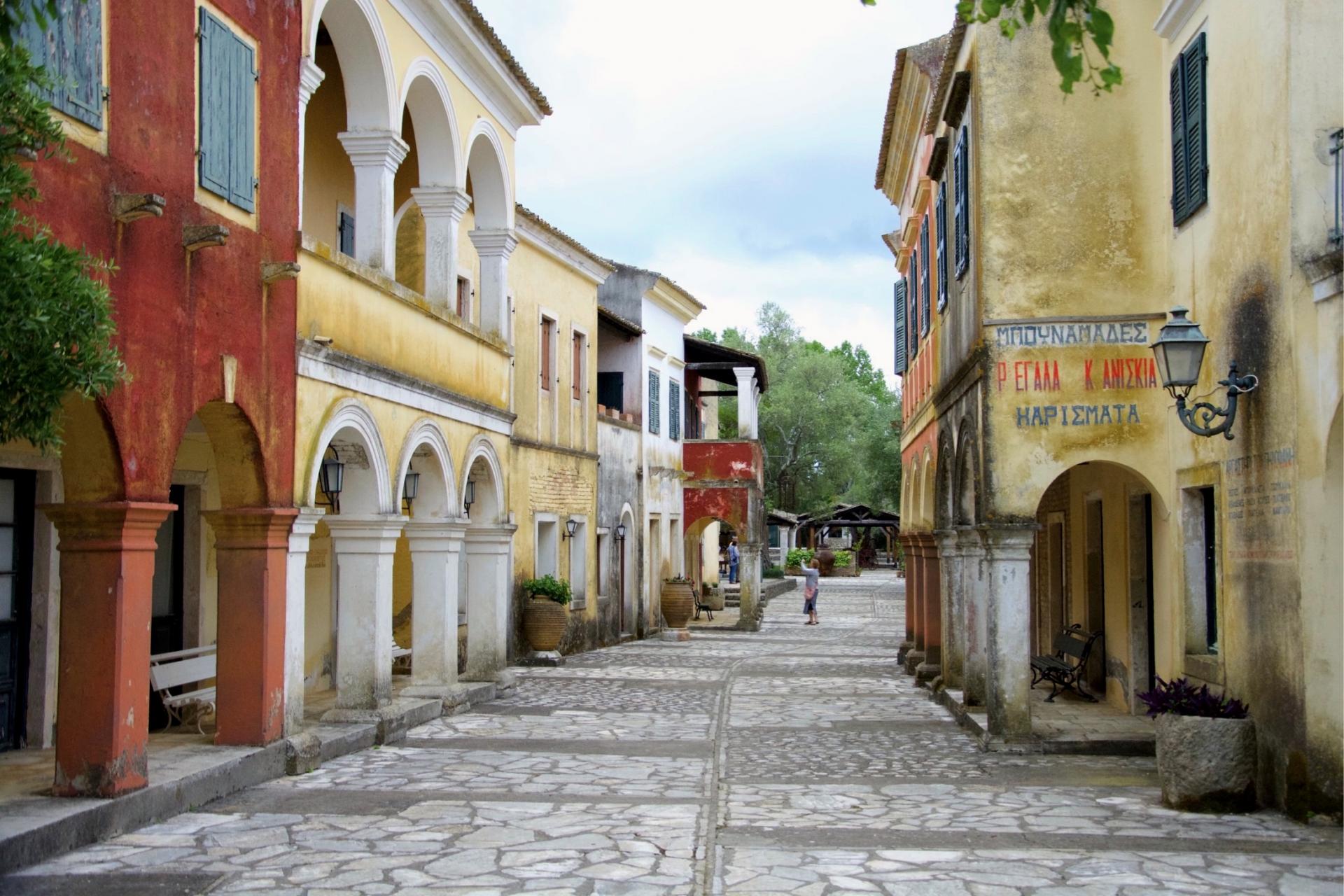
The next morning, we headed to a wonderful brunch spread created by the talented chefs at the Vocational Training Institute in Danilia. In the little research I did about Corfu prior, I remember skimming across a snippet about The Durrells, which is to Corfu as Forks is to Washington circa Twilight area. Based on Gerald Durrell’s three autobiographical books about his family’s four years in Corfu, The Durells in Corfu is an extremely popular British comedy series and was filmed on location in Danilia. You can find it on Amazon Prime. The town is picturesque, almost too picturesque, as it is literally a replica of a traditional Corfiot village and now only used as a film set.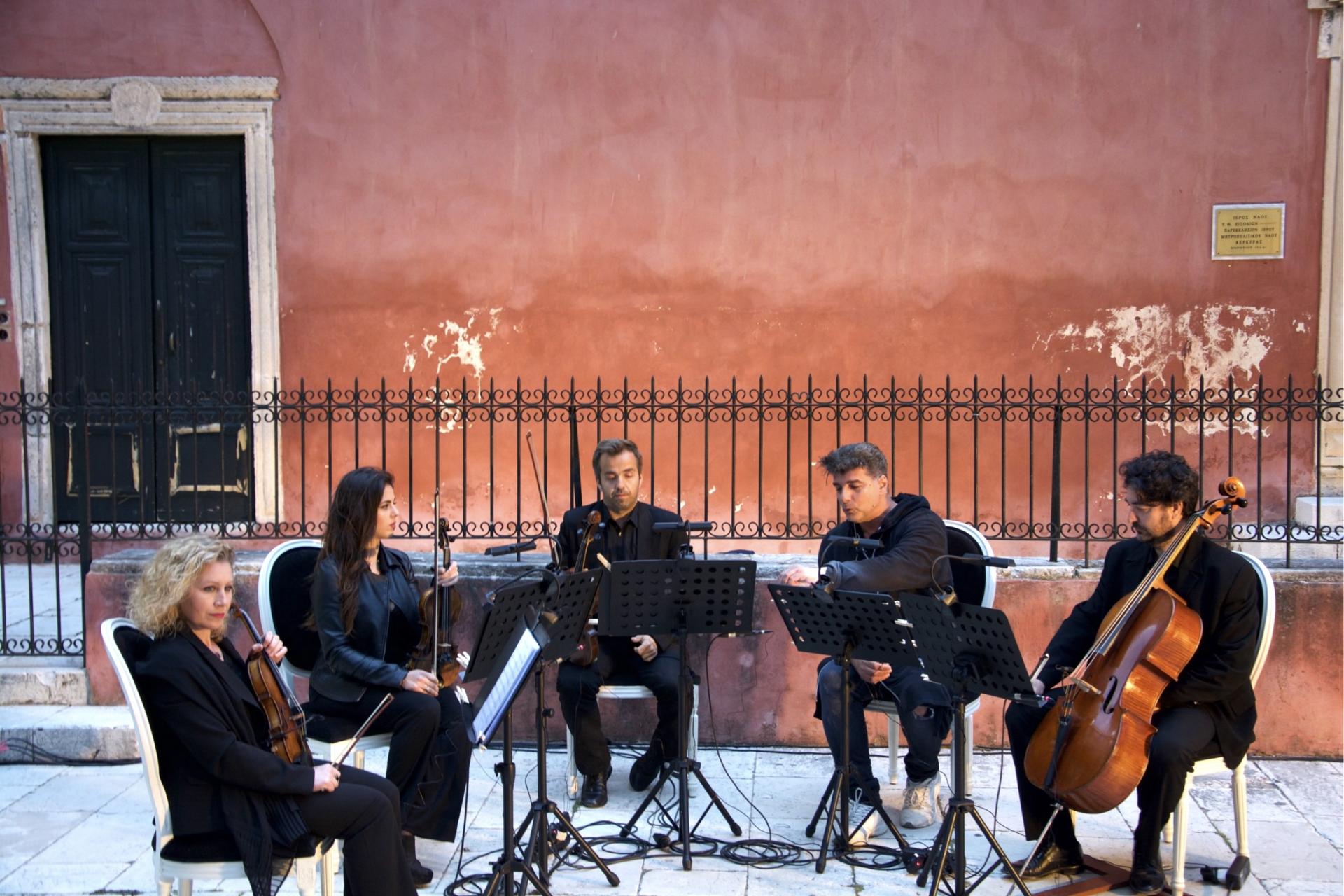
We then made our way over to Kremasti Square, where a concert conducted by the famous Petros Gallias and ION ensemble played early 19th century classical music from the home cities of Kapodistrias with the red wall of Panagia Kremasti as a backdrop behind it. Named Kremasti from an icon of Panagia that was hanging on the wall, this church was built in 16th century in the type of basilica with exo-narthex in three sides, but only one is still preserved.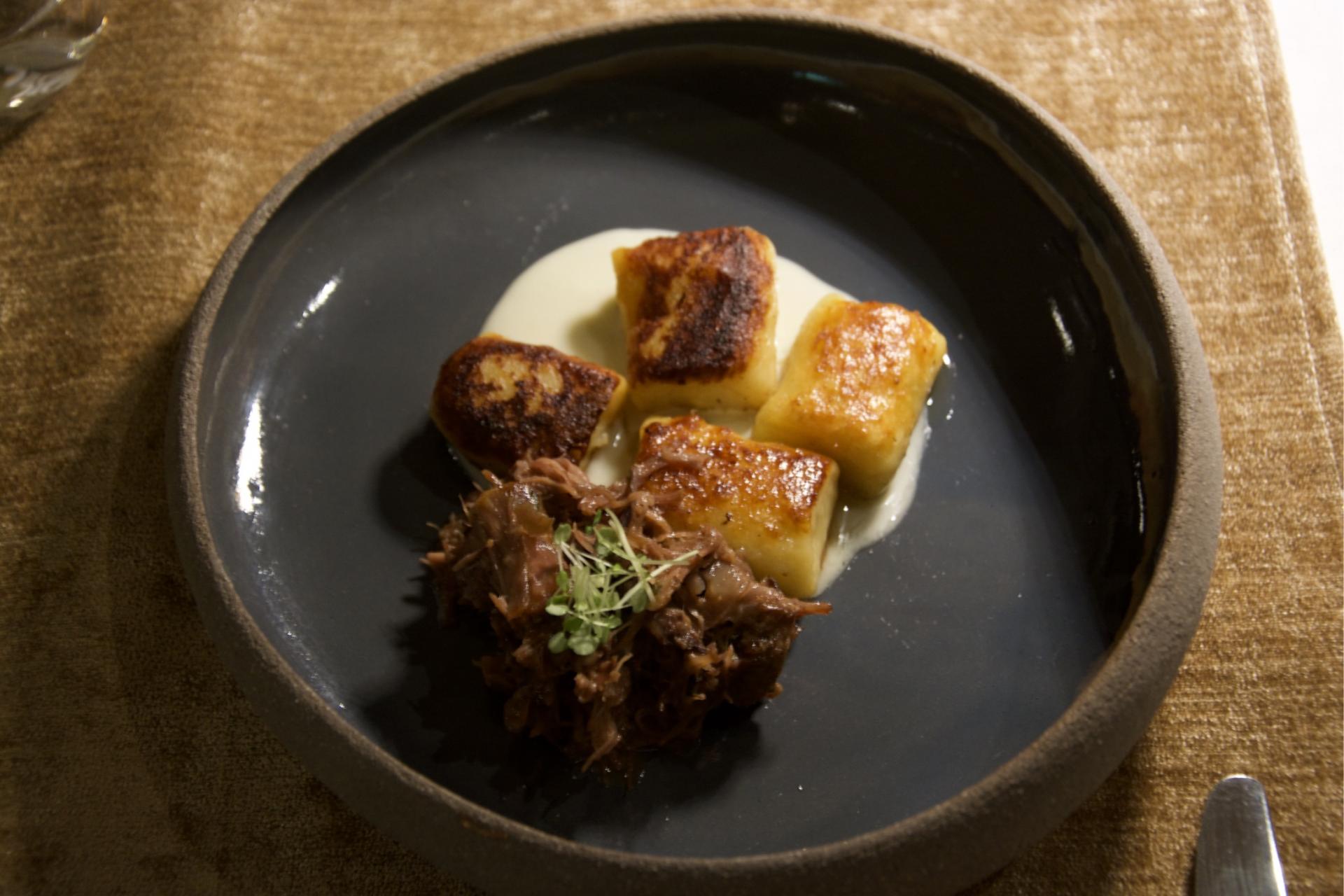
The first night’s dinner set a high standard for the meals to come, but our second dinner at the iconic Venetian Well, so named for the Venetian well at the restaurant’s entrance, was sensational. Chef Yiannis Vlachos showcases Venetian and Corfiot flavors in lovely textures and impeccable presentation in a high-end, romantic atmopshere. Even traditional, heavy dishes like pastitada make their way on the menu in a lighter, more modern form though it was the unique entrees that really stood out. The crayfish tartar with yuzu, the braised veal with gorgonzola gnocchi, and kumquat cake paired with hazelnut mousse and a glass of Samos Grand Cru made it feel like the special occasion dining there was and is.
Day 3:
The next day we went to Palaeopolis, an archaeological site located on the Kanoni peninsula where the ruins of the ancient Corfu town still remain. With free entry, we spent some time walking through the Mon Repos Palace, now a museum, which Sir Frederic Adam’s had constructed in 1832 to satisfy his wife and was used mainly for cultural and educational purposes until 1864. Among the ruins you can find Era’s temple, Roman baths, the remains of Doric Kardaki temple, the harbor of King Alkinoos, and the city center, which is said to be opposite the grounds of Mon Repos Palace.
After touring the palace, we ate a seaside lunch at Flisvos, a charming and clever name for owner Spiros Catechis’ restaurant that also describes the sound of waves rippling on the shore. Nibbling on a fresh, microgreen salad between sips of light, refreshing Theotoky wine as the sea breeze skimmed our shoulders, Catechis and the group chatted about the true meaning of organic food that is reflected in the direct relationship with your farmers and vendors, which the New York native strives and successfully shares in his restaurant’s food.
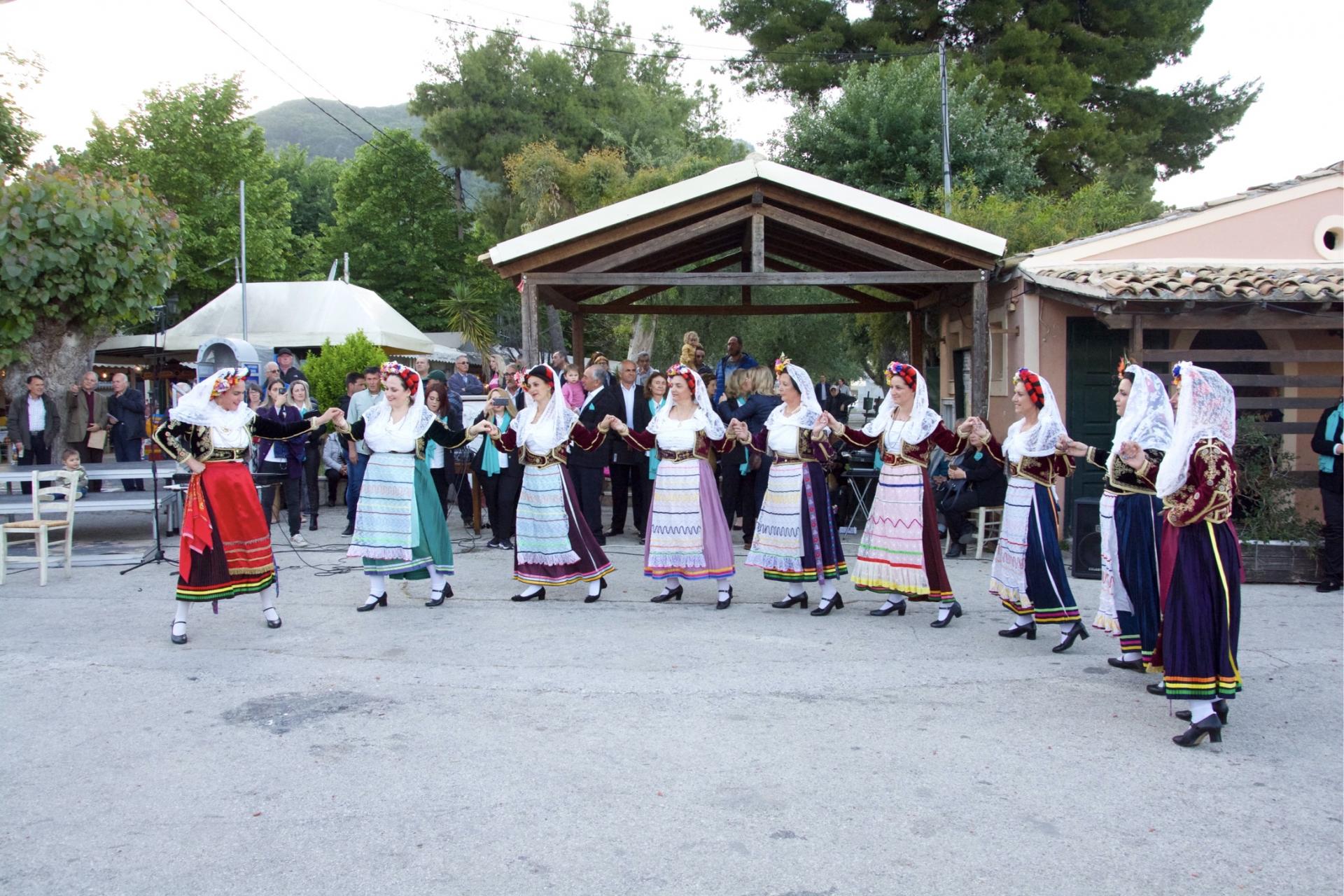
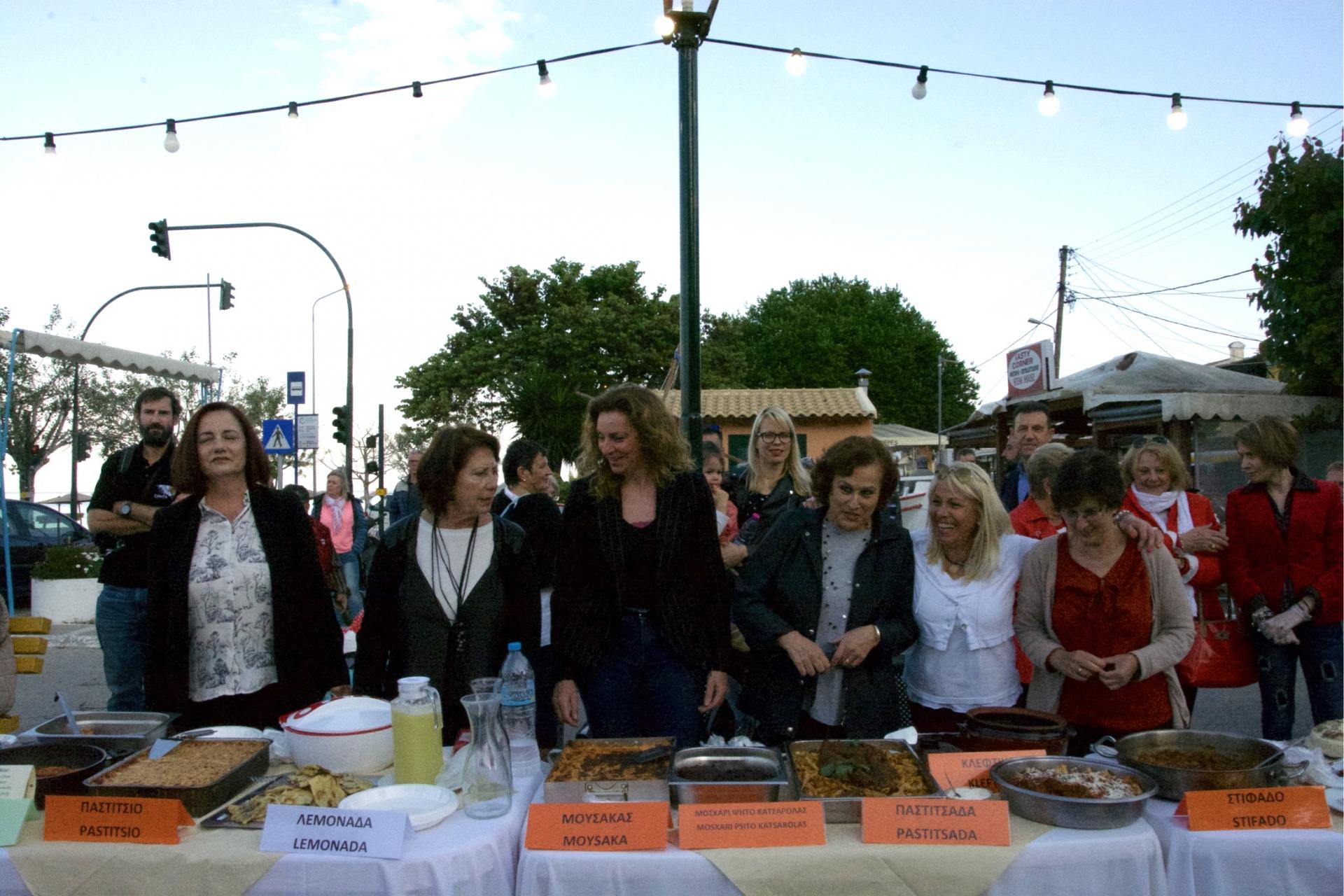
Thinking there was no way dinner could get better, I was again proven wrong in a completely different and equally delicious sense at the Benitses festival. Benitses was one of Corfu’s first tourist destinations, thus leading to the tourism growth of the entire island. Traditional dancing and tasting the best of the best home-cooked Corfiot food welcomed us to this 17th-century traditional village, as we joined the village’s Friday night celebration of their lively community. The ultimate cook-off between Greek mothers took place in the form of a homemade buffet and the battle was waging in my mouth. Everything from pastitsio and bianco to sofrito and stifado merged into a pile of messy Greek soul food that had me stuffed within seconds and happy for hours.
Day 4:
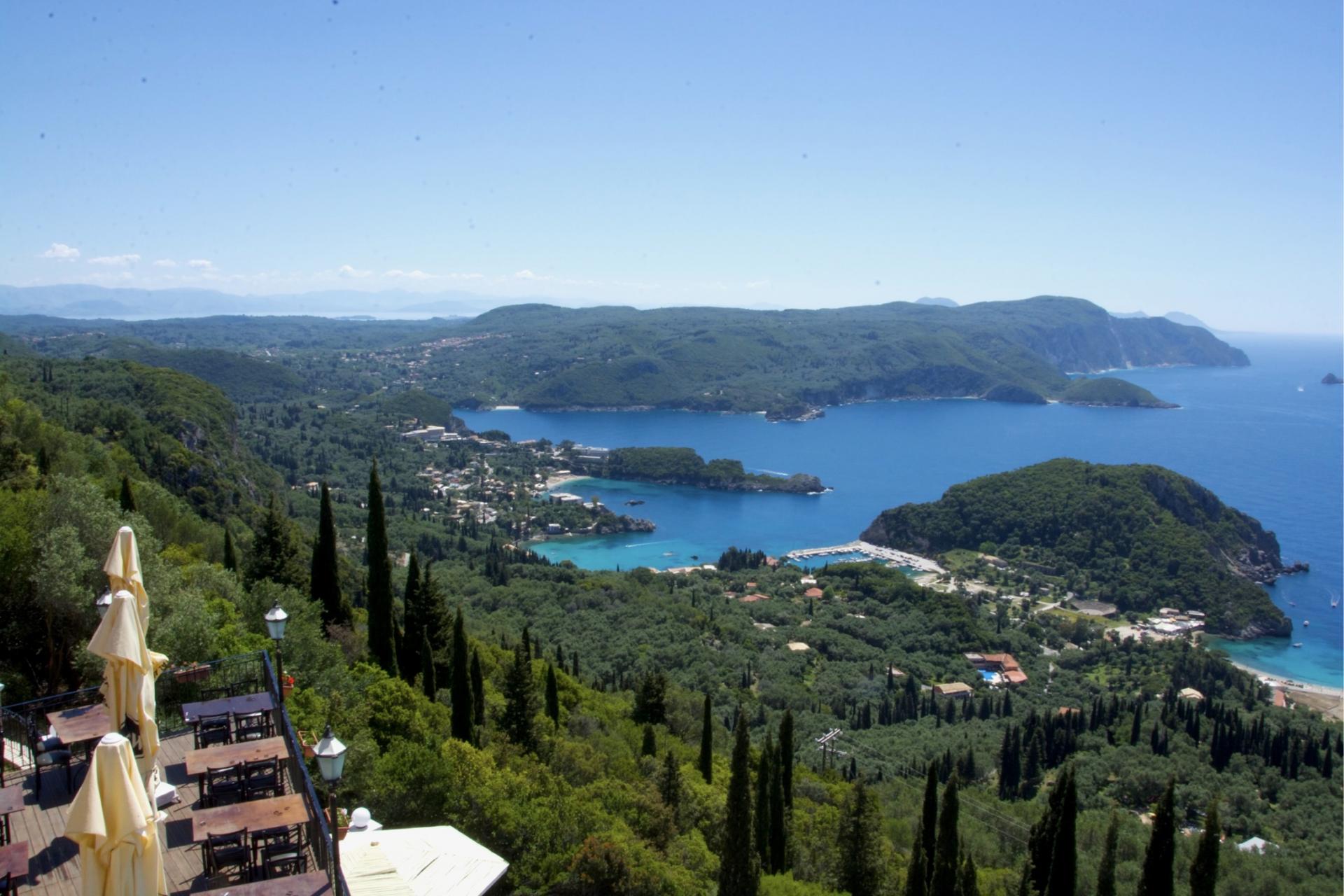
The next day we hopped in the van and drove around the island, starting west with Paleokastritsa, where lies the 12th-century monastery of Theotokos atop a hillside overlooking the deep blue sea. Nestled at the bottom of the hill is the famous Agios Spyridon beach, whose crystal blue waters are an oasis for swimming, water activities, and starting point to take a taxi boat to visit the Paleokastritsa caves.
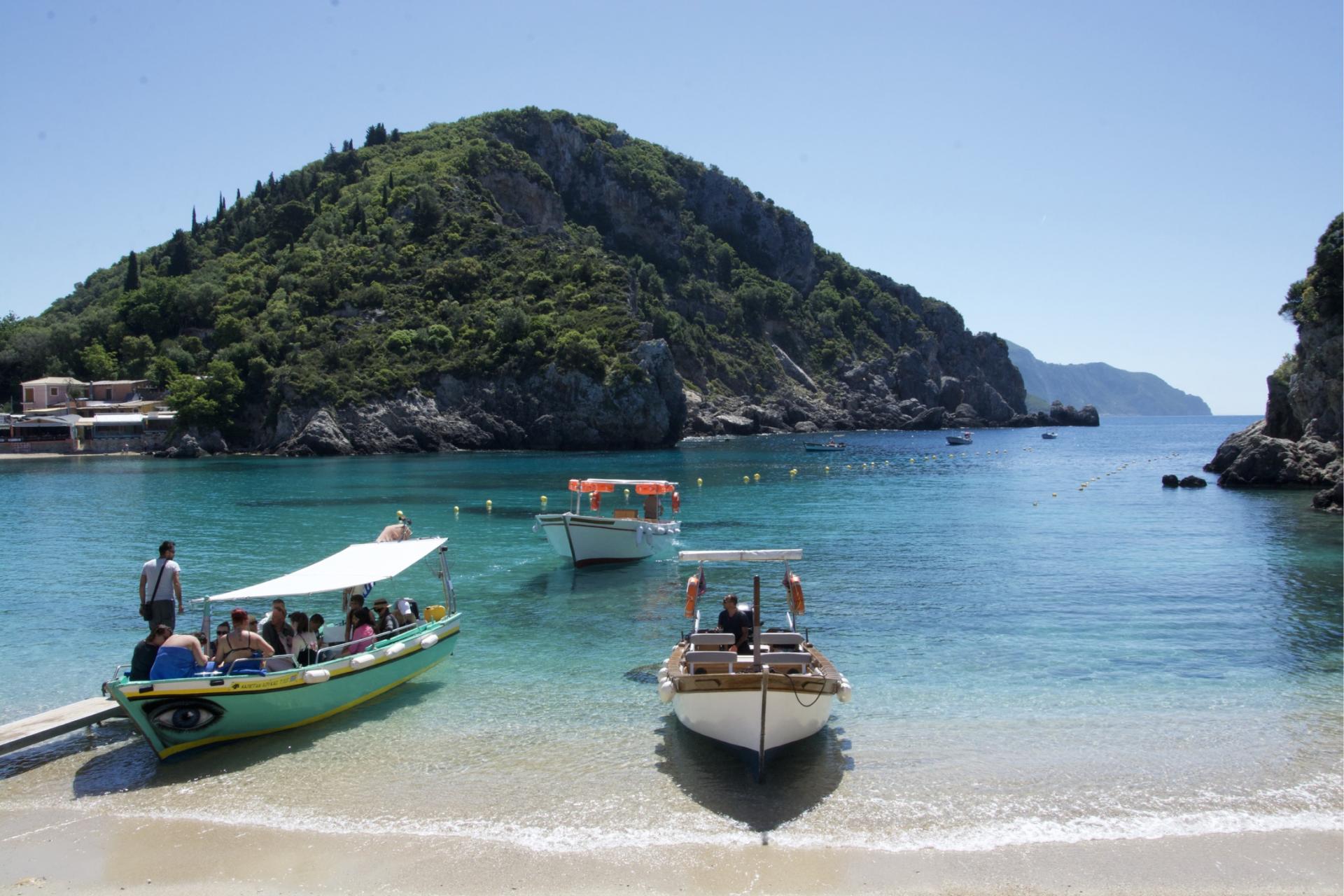
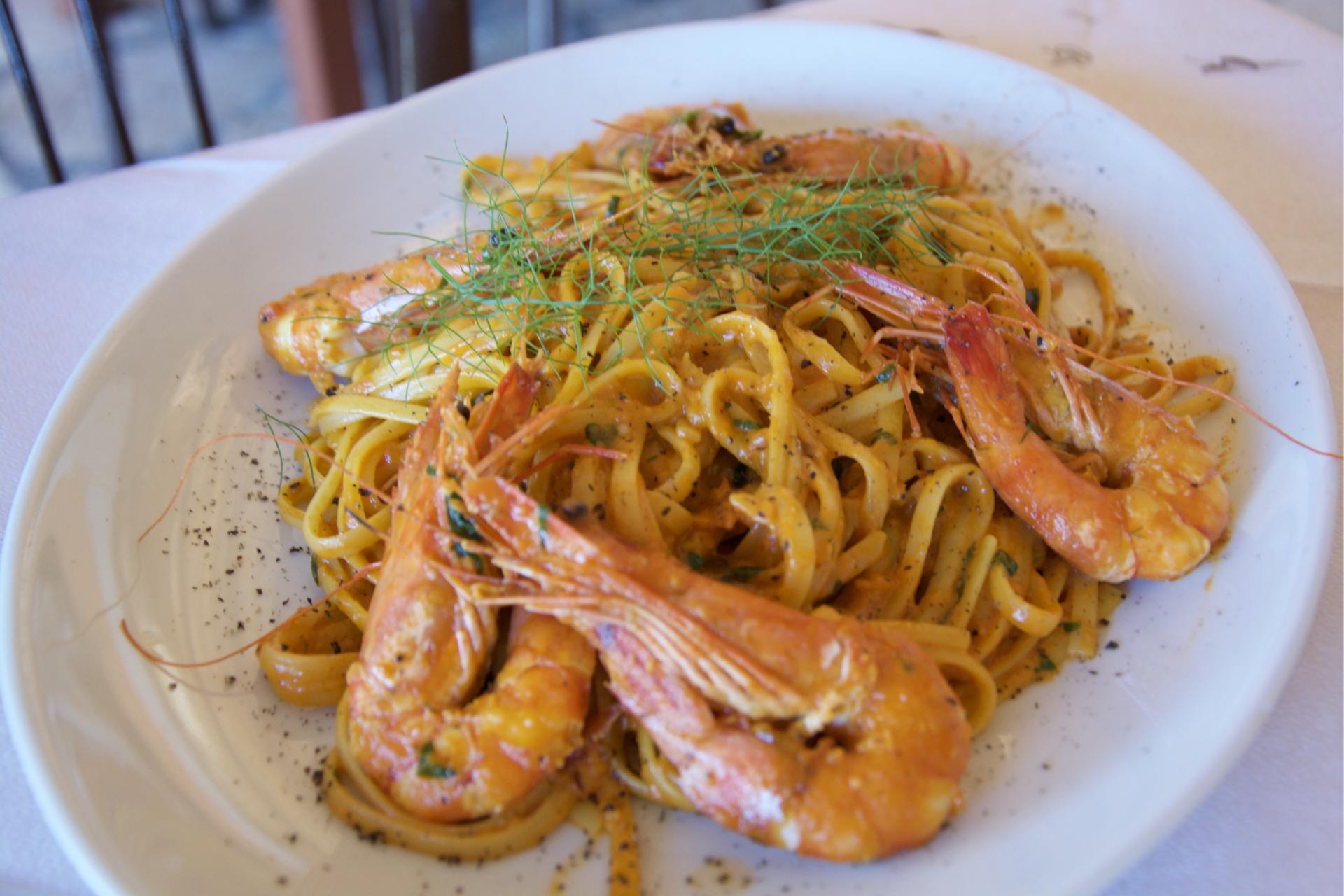
We then drove north around the tip of the island through Kassiopei and had a very late—scratch late— lunch at Nikolas Taverna. Casual and cozy, this is the family-owned and run establishment I imagine many regular friends and families gather together at. It’s everything you imagine a taverna to be; laid-back and friendly, with easy, no-frills food, but take one bite of their fresh grilled shrimp linguine in a creamy saffron sauce and you’ll have to decide if you want to take a dip in the sea or that sauce.
A quick swim in the ocean, and off to another wonderful performance by Gallias of Solomon’s “Song of the Songs”, this time in the Jewish Synagogue of Corfu. Since 1160, Jewish people have inhabited Corfu and during the Venetian period, they produced a multitude of products like cotton, wine, olive oil, silk and fabrics. After the second World War persecution, the few that remained lived peacefully in Corfu and still do today.
As dynamic as Corfu is in the day, it is even more so at night. If I have one tip for immersing yourself as a local, it would be this: STAY UP LATE. A typical lunch takes place around 3:30 p.m. and a typical dinner starts around 9:30 or 10 p.m. so do not be surprised when you see the streets bustling and energetic long after the sun goes down. Whether it’s sipping on a mastiha at Bristol Cafe, treating yourself to gelato made from local sheep’s milk at Gelateria Papagiorgis, buying some kumquat liquor and sweets at Lazaris, or keeping your midnight munchies at bay with a late-night burger from Earth Cafe, there is lots to do as the night becomes day.
Day 5:
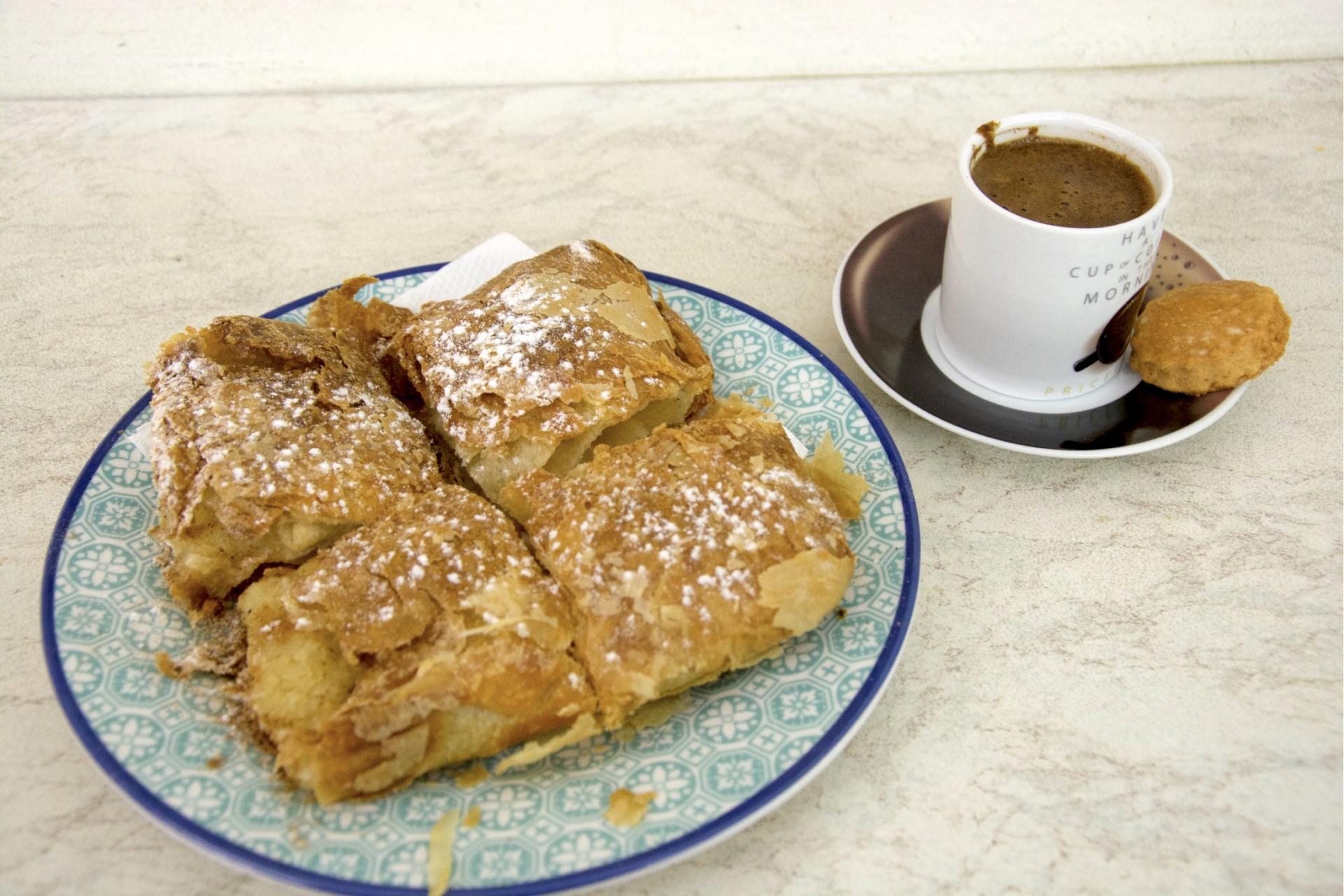

As the mayor’s words closed the ceremony on the final day, my friend Marcia and I grabbed a delicious, warm bougatsa at Starenio Bakery and continued on to do what I REALLY came here for: to write about and eat pasta.
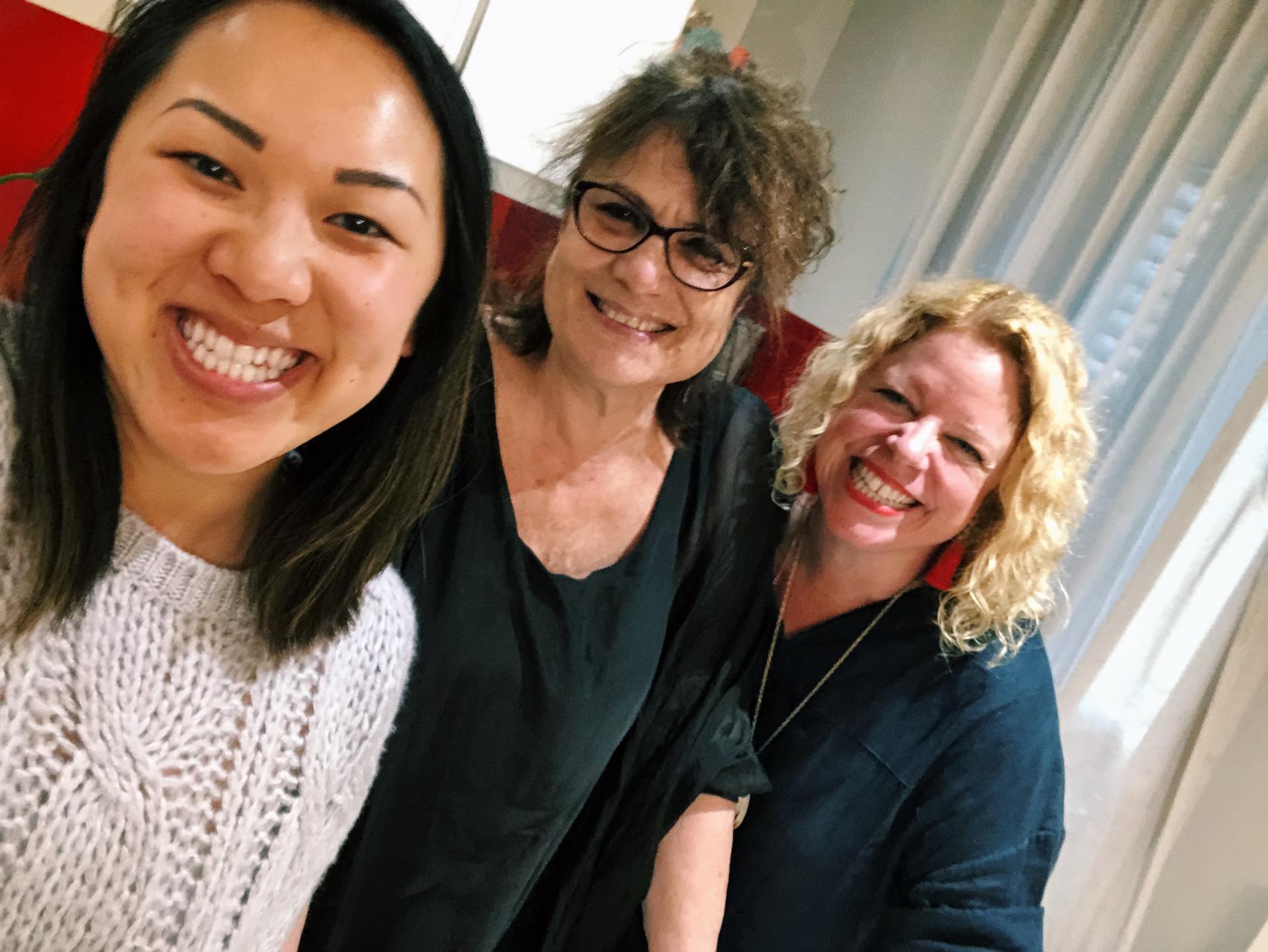
To make the most of my trip, I had arranged to get to know the Greek island of Corfu through its most famous dish, pastitsada, and I thought, who makes a Corfu dish better than a Corfiot? Through a few researched connections (thank you Facebook) I was able to join the hospitable, beautiful, strong, and funny-as-hell Mrs Annie Nounessi – Vassiliou’, aka Signora Bigoli aka my Corfiot grandmother, in her kitchen and learn how to make real patitsada. I won’t get into details, as I wrote a whole article all about this delicious, earthy, aromatic and stick to your ribs Sunday supper Corfu style, but just know that it’s an article you should read, and a dish you should eat.

When speaking with one of my fellow journalists-now-friend Irene who used to work in a highly regarded fashion magazine, I asked her what it was like working in fashion as that was an industry I was once very interested in. In the most jovial response, she said that after working in fashion, she realized people that enjoy food and wine enjoy life, which made me chuckle in agreement in those word’s pure honesty.
 So if you’ve learned anything from this post, is one, visit Corfu, and two, eat and drink well.
So if you’ve learned anything from this post, is one, visit Corfu, and two, eat and drink well.
It’s moments and trips like these, even when I don’t know what I am doing or how I got here, that I have a short but glorious revelation that I know exactly how I got here. Continuing to place myself among talented writers and journalists, it’s easy to compare myself to those with years and experience far beyond my own. But then I think about all the things I have done for myself and this blog, being driven by nothing but pure passion for food and our connection through it, I remind myself that I have every right to be proud of myself. I am continuously inspired by the way food and travel bring people together to communicate through gastronomy, exchange ideas and build cultural connections; a passion that grows bigger and wider with each new dish I taste and person I meet.
It was the second day in Greece, after 24 hours of traveling and being jet-lagged beyond belief, still hesitant they picked the wrong person to fly to Greece and that there was some mistake. I looked around at the lush greenery and blue ocean on this gorgeous Greek island around me, and said to myself “What a life!” And from behind my dear friend Irene chimed in “Honey, this is your life.”
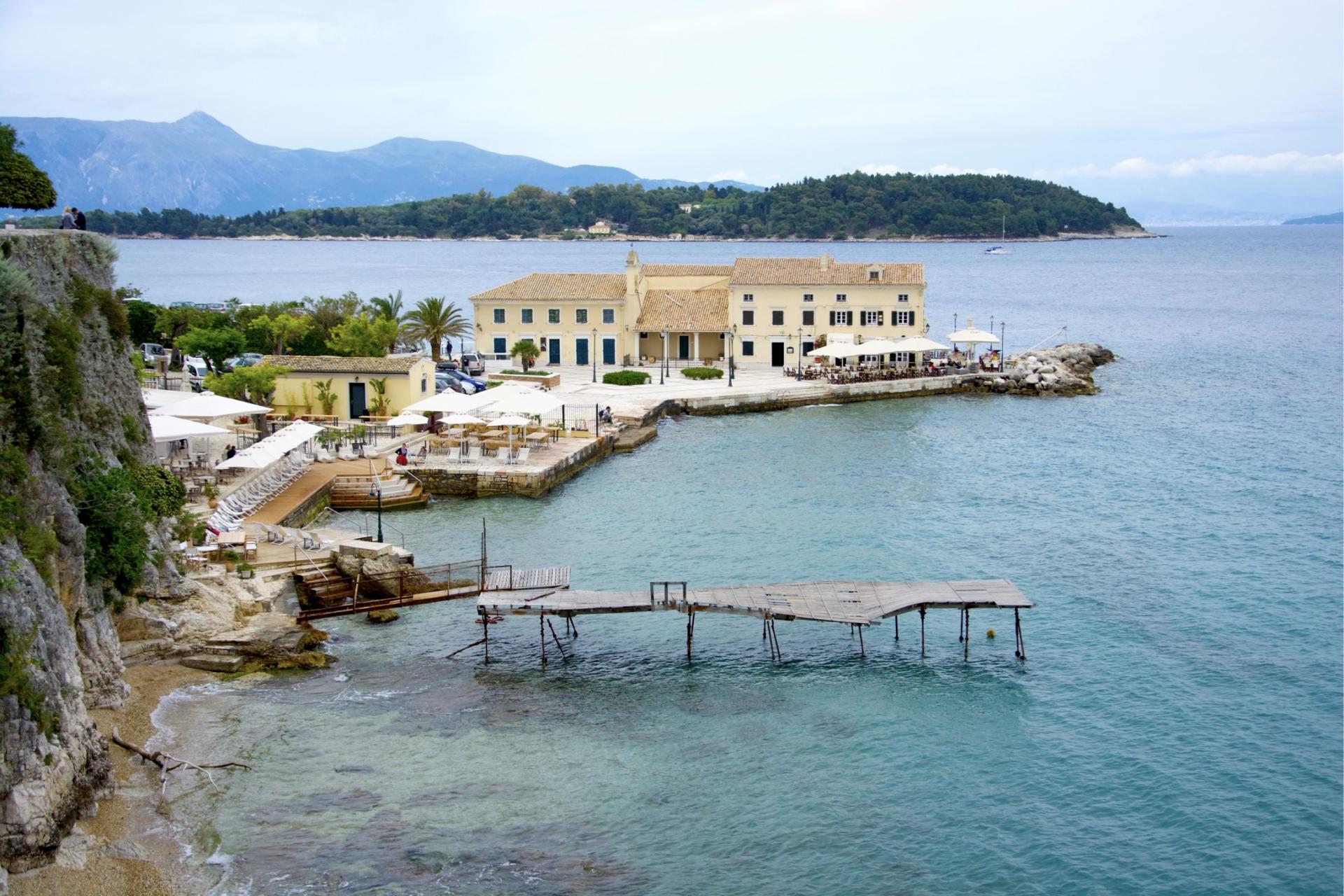
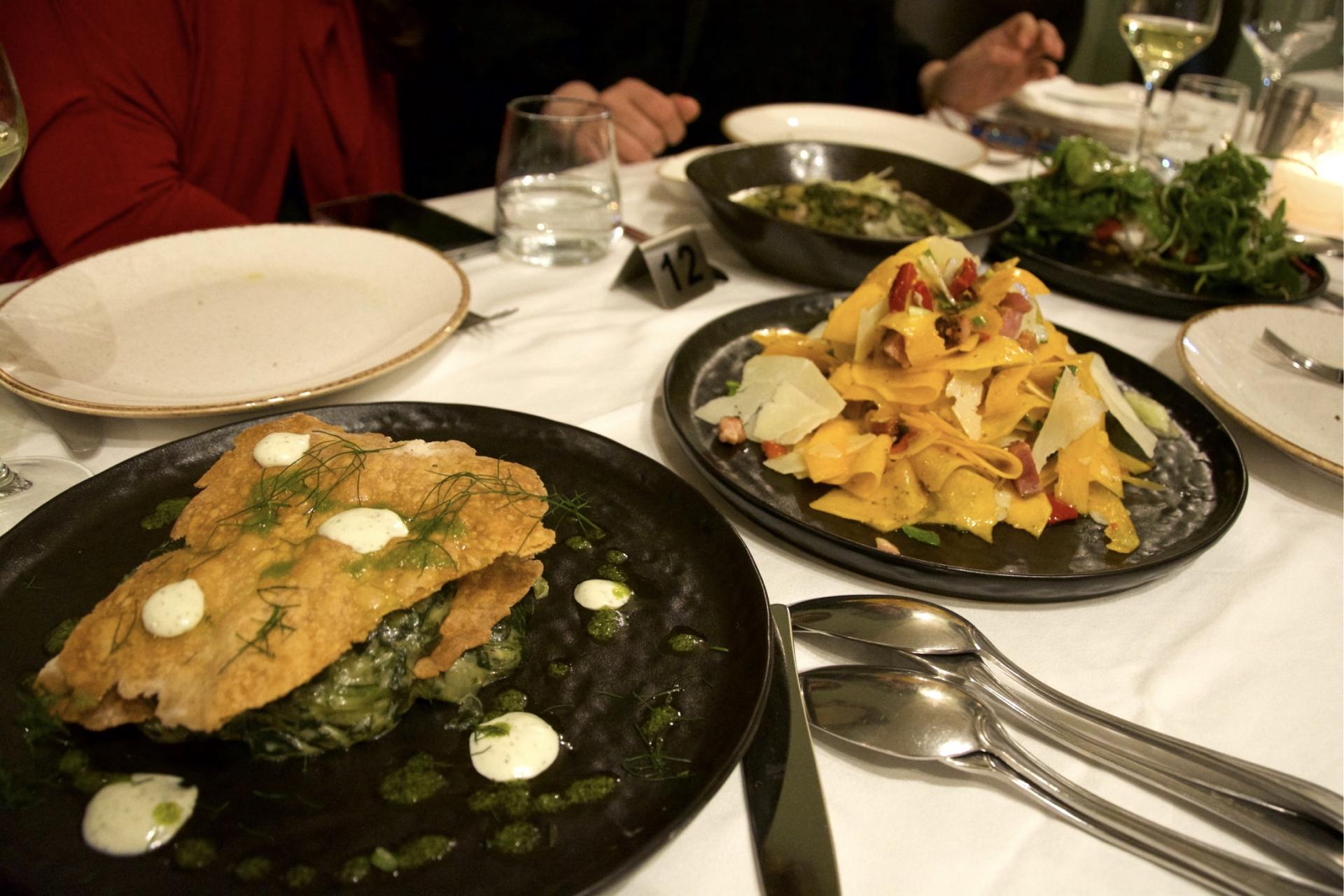
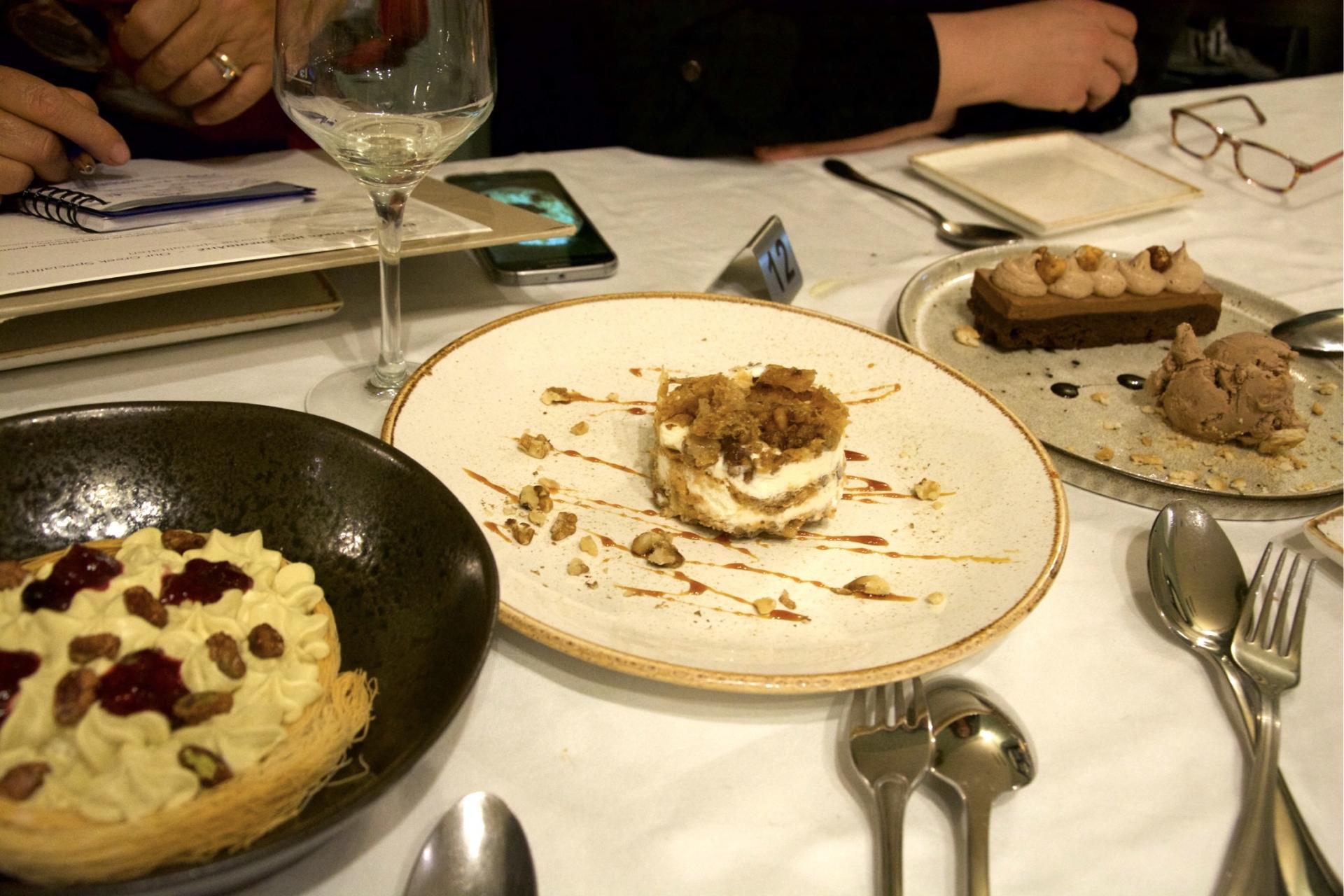
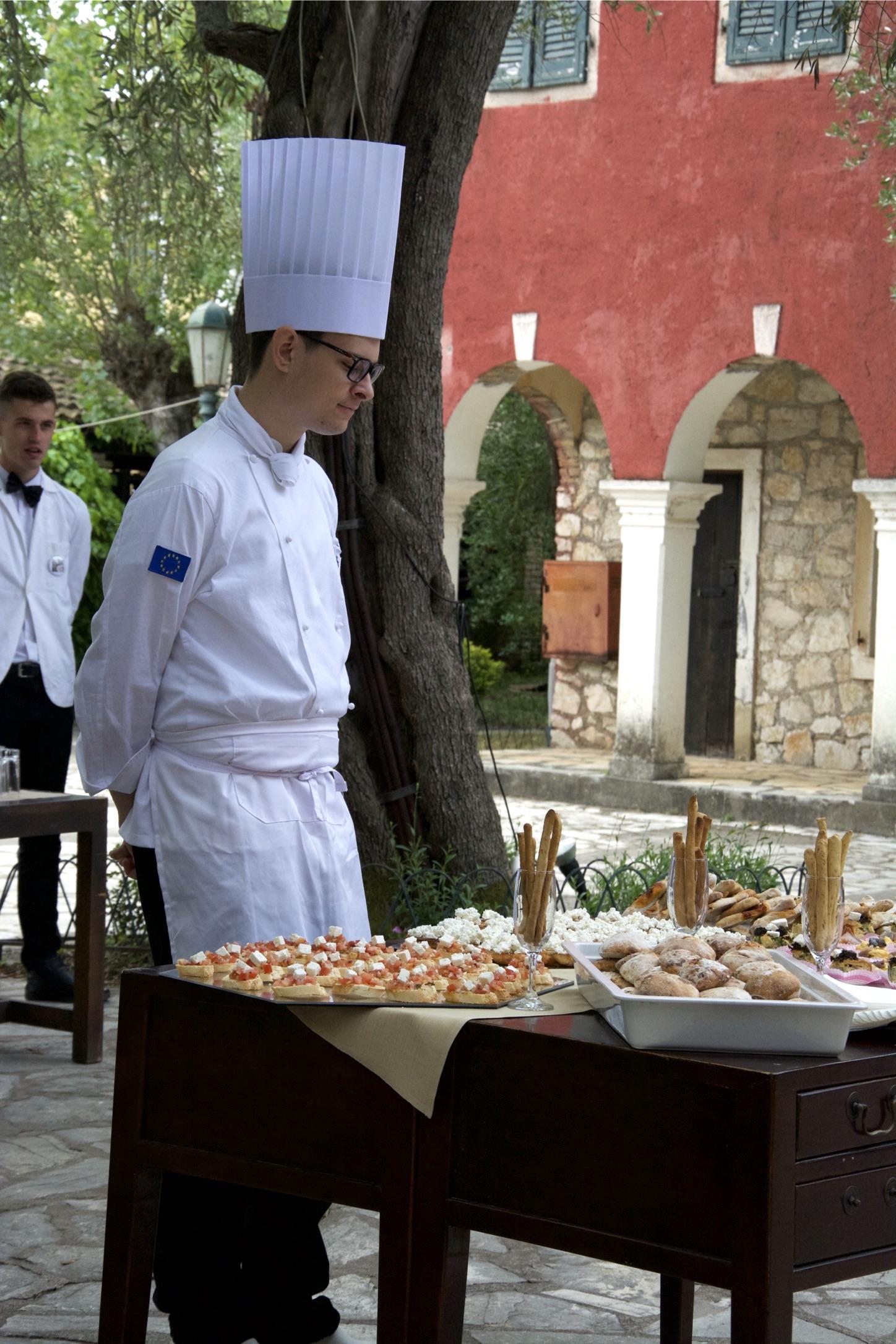
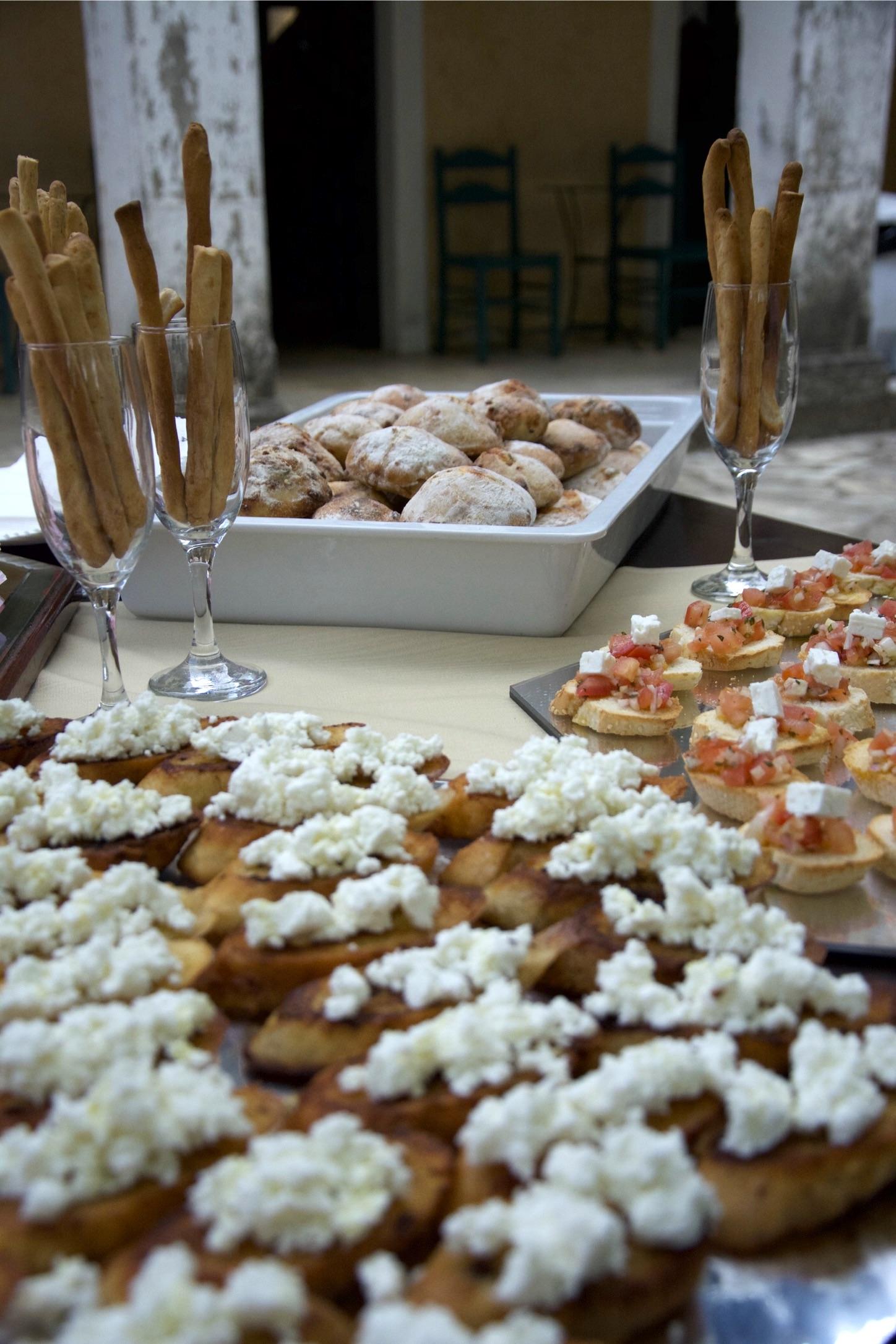
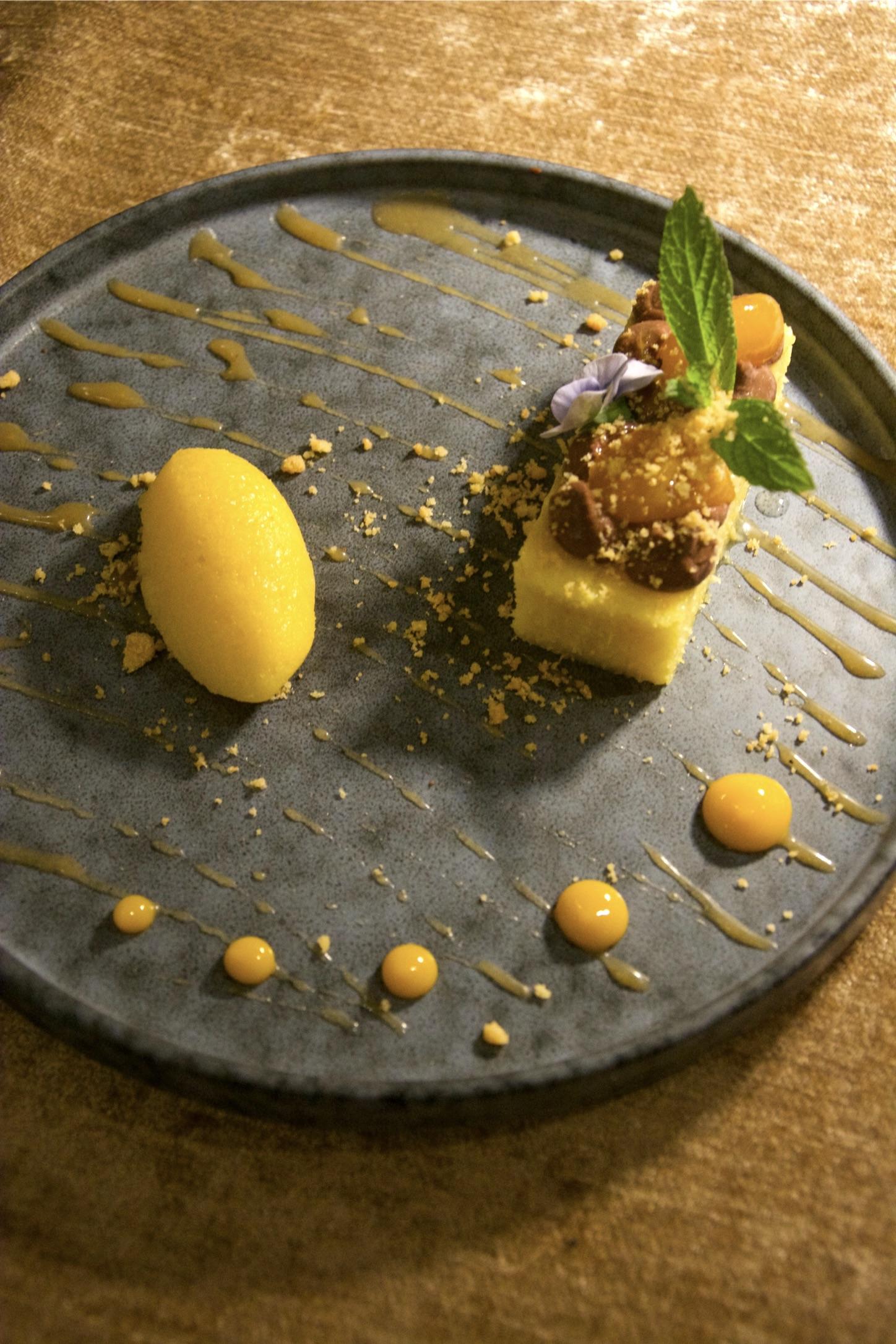
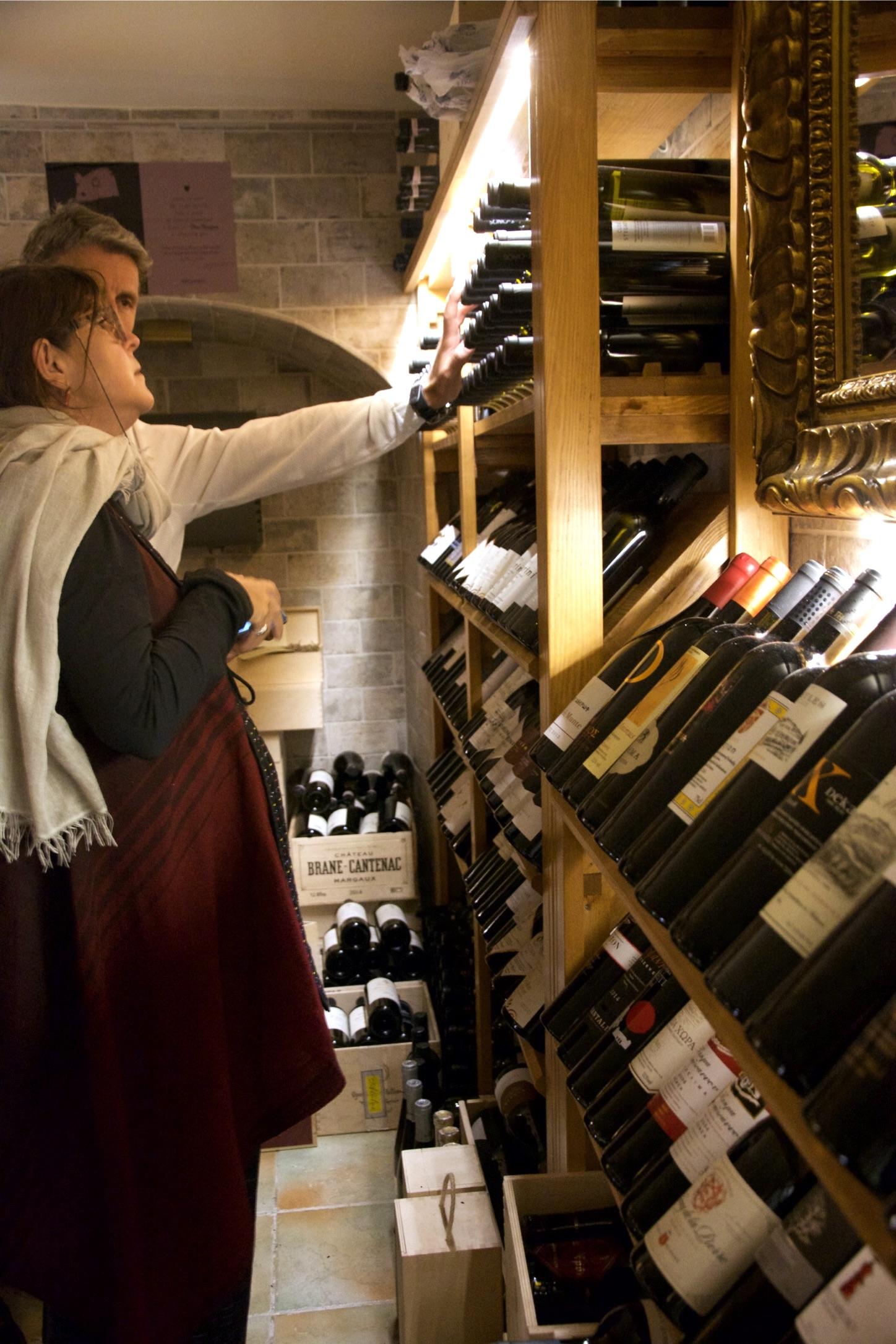
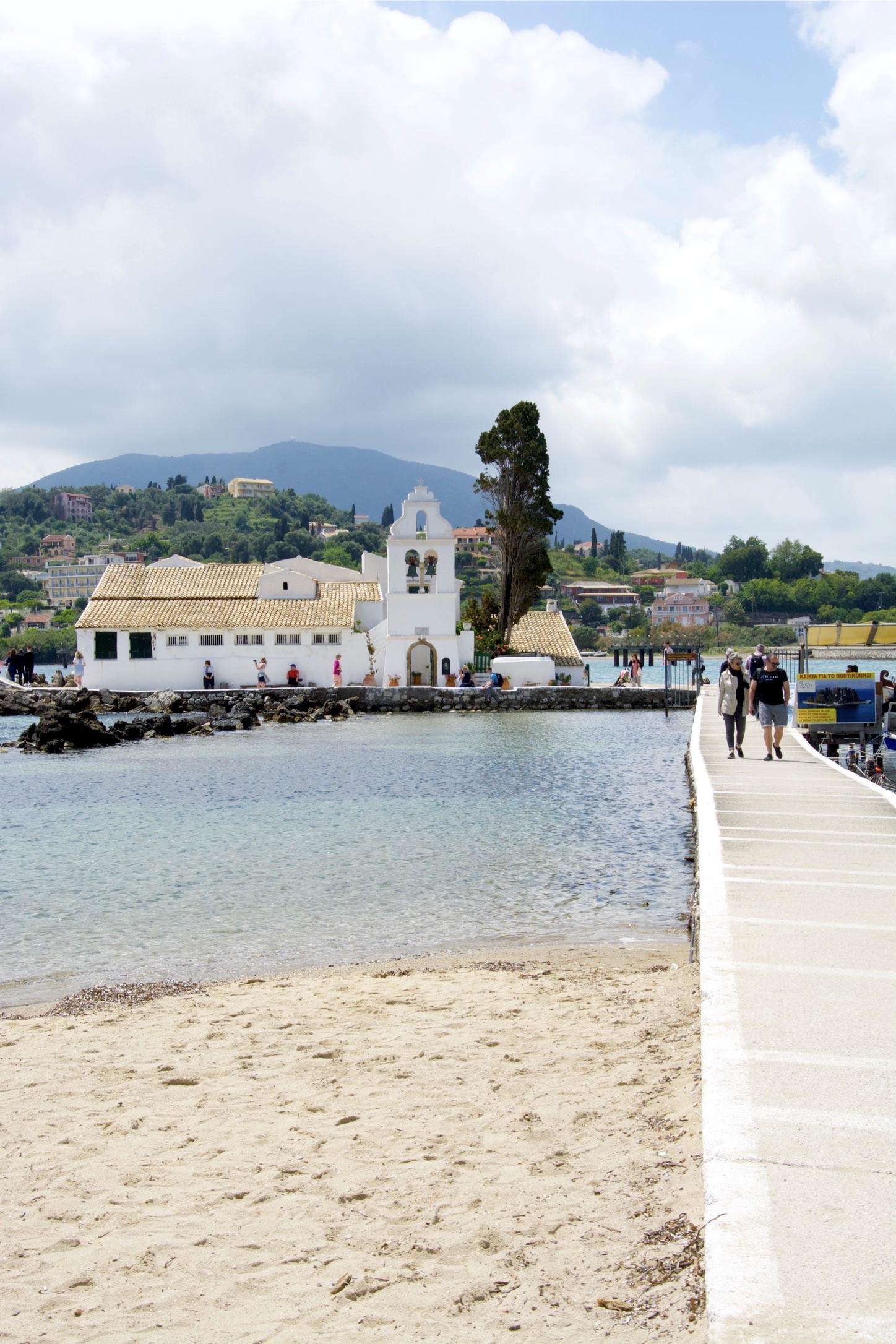
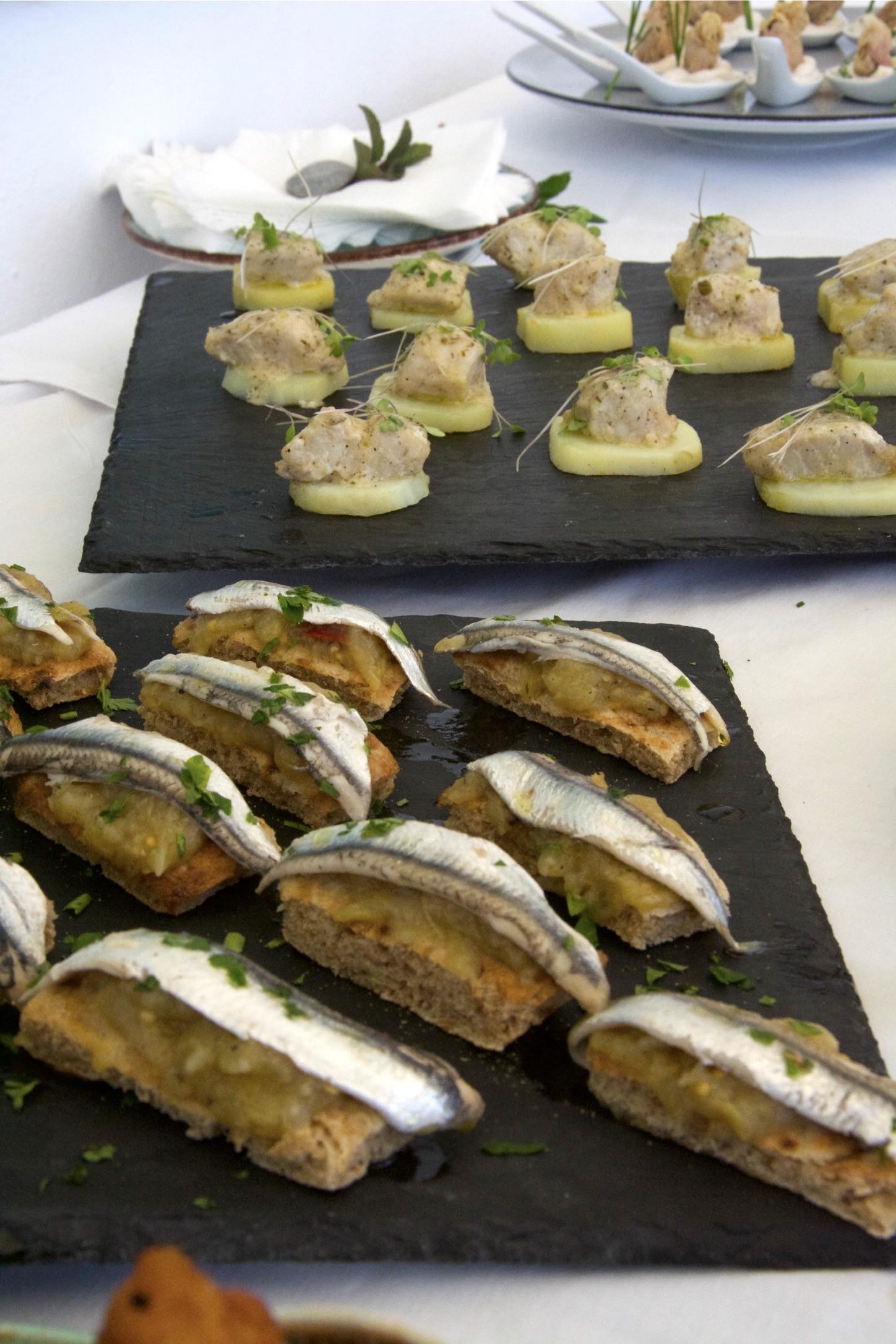

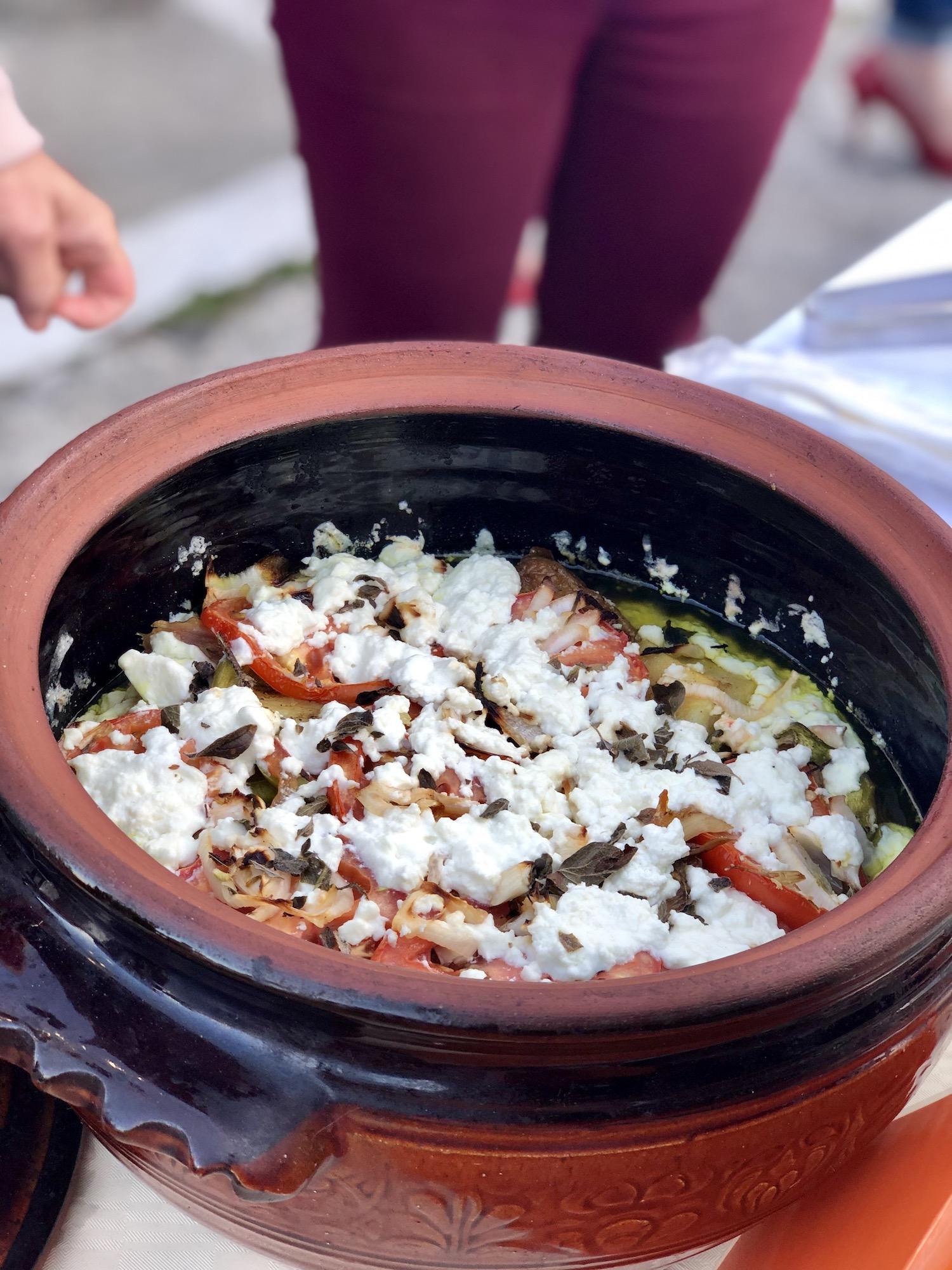
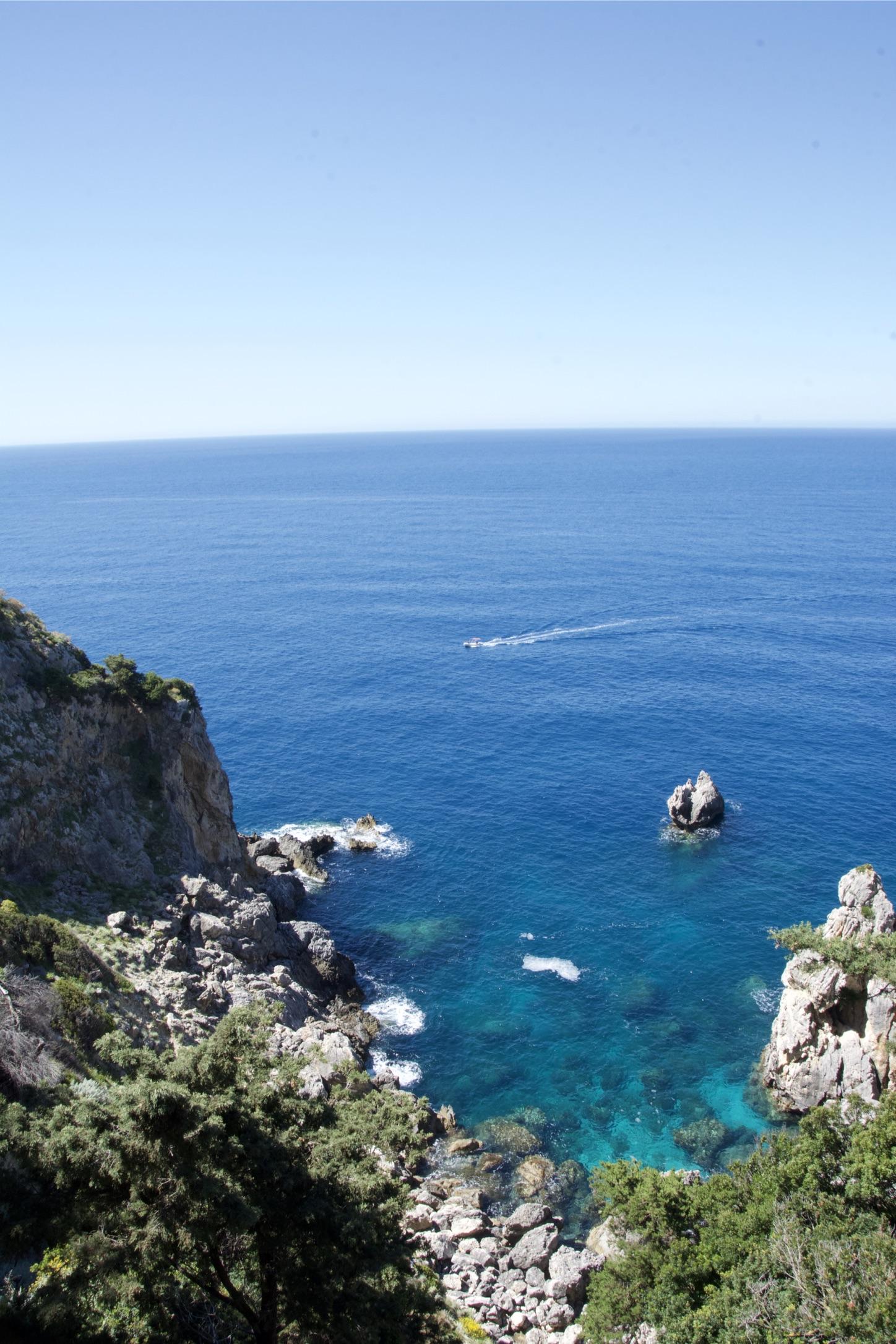
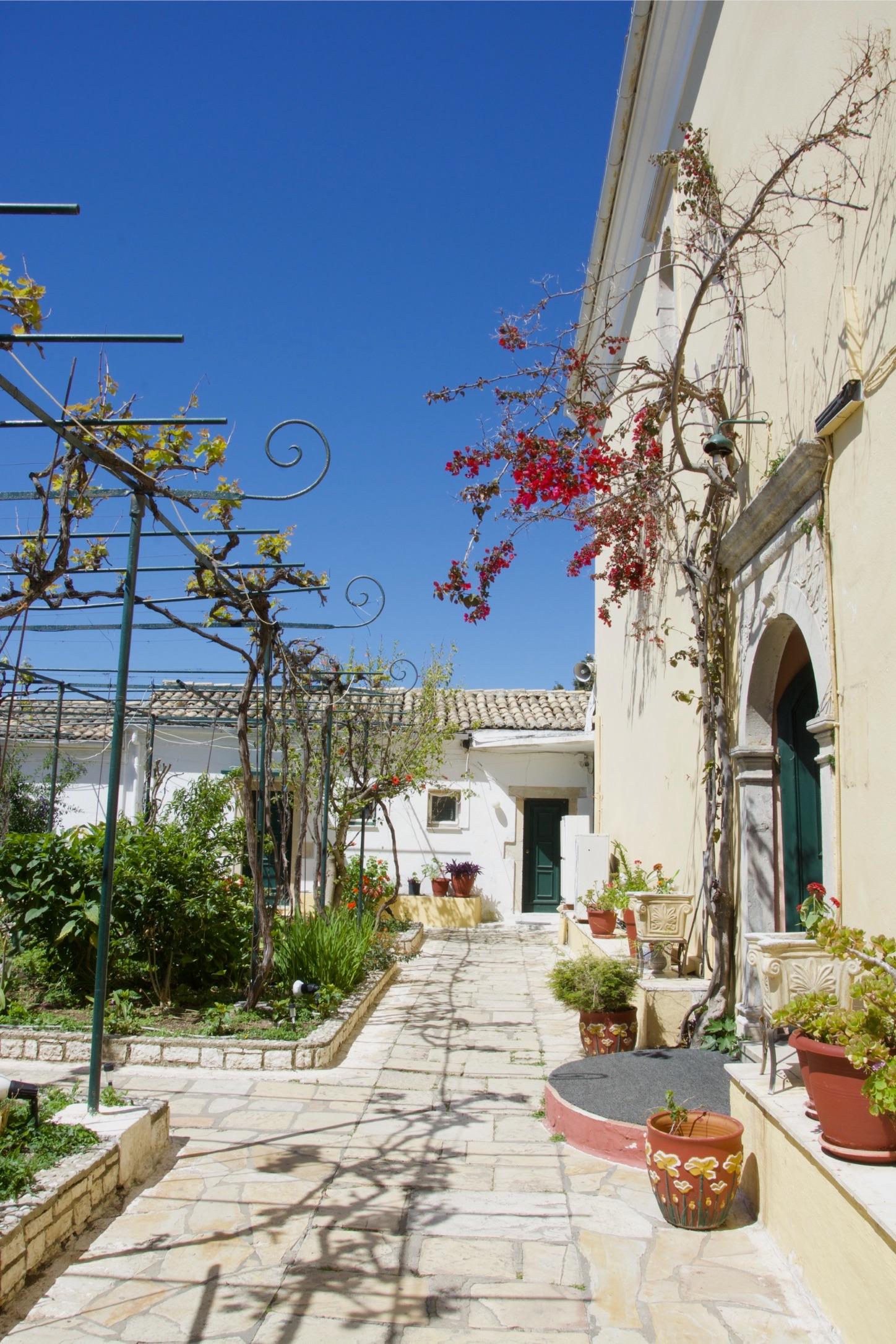
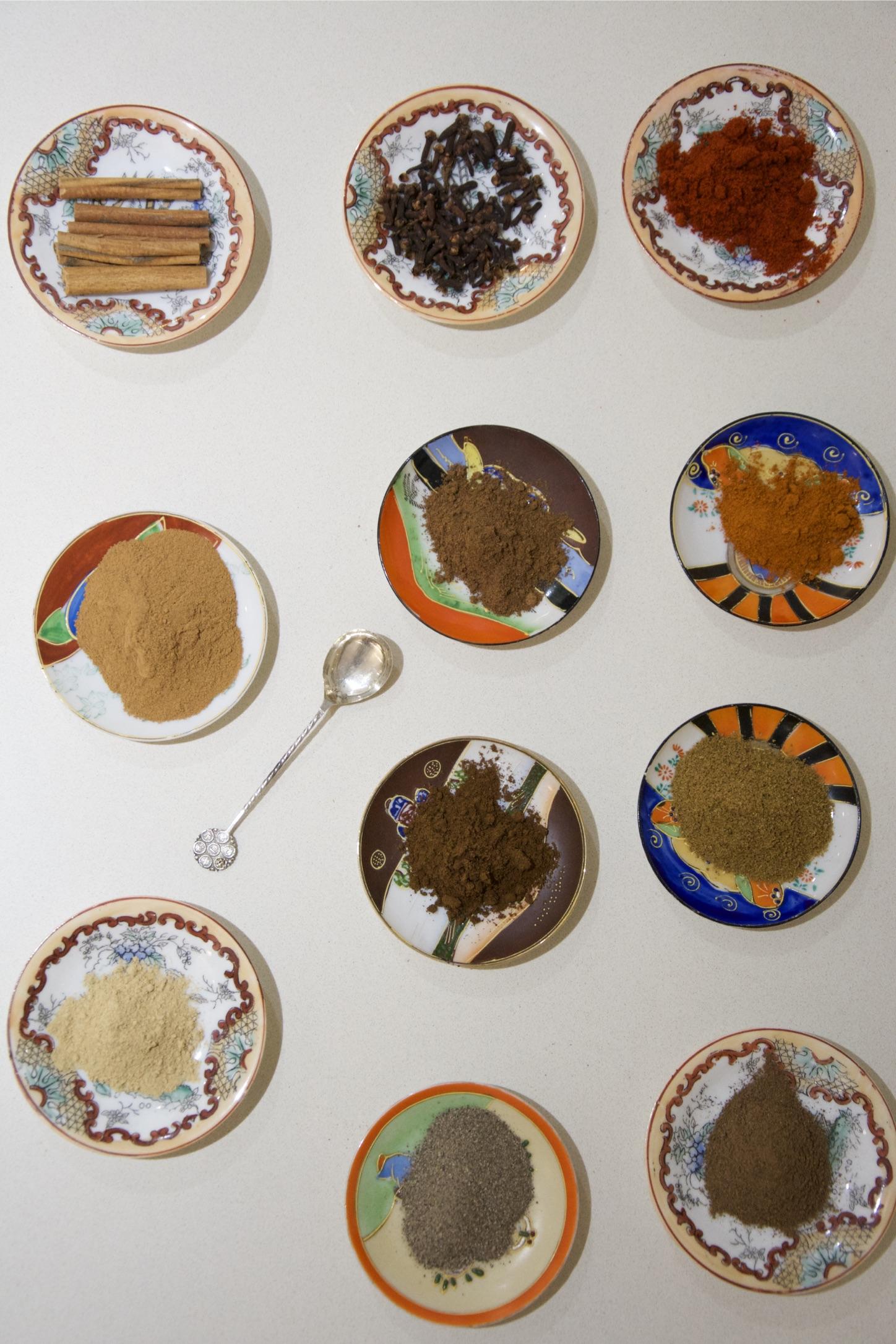

Well written, concise and informative interlaced with food, you described Corfu through light history and easy reading. Thank you.
Clearly your best Somewheresoleil yet….great photography, words that allow us to live your adventure. And, as your Dad, I am so glad to see you have earned such a life…your life. Love Dad
That food looks insanely delicious! What an amazing opportunity!
It so was- delicious and an amazing opportunity!